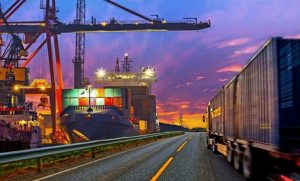 By: Alfredo Vega.
By: Alfredo Vega.
The ghost of tariffs once again haunts the world. The latest round of measures imposed by Donald Trump in 2025 is not only a commercial earthquake; it is also a wake-up call for companies that still rely on fragile global supply chains. Yet amid this storm, one area stands out for its potential: Mexico — particularly its northern border — could emerge as an unexpected refuge for industries seeking to escape tariffs.
As Washington and Beijing become further entangled in an endless trade war, Mexican cities along the U.S. border — Mexicali, Tijuana, Ciudad Juárez — and others nearby, such as Monterrey, maintain a competitive edge. Manufacturing in Mexico allows companies to bypass tariffs imposed on nations facing higher duties, except for the automotive sector, while maintaining competitive costs. It is no longer just about traditional maquiladoras, but about full-scale plants producing electronics and even semiconductors.
This is not the Mexico of the 1990s free trade agreements. Today, the narrative of nearshoring — producing closer to the end consumer — is coupled with a message of resilience. Companies are no longer coming only for low wages; they are coming because they need stability amid the tariff war. And that is transforming how Mexico can market itself to the world.
Some global brands, such as GoPro, have already turned this shift into part of their marketing strategy: “Closer to Texas, away from tariffs,” proclaims a recent ad. Samsung now produces 40% of its phones in Vietnam, while Ikea is sourcing materials from Turkish and Polish suppliers to avoid tariffs on Chinese wood.
Others, such as Bimbo and Grupo Lala, are leveraging the moment to strengthen their image as local companies with global reach. Patagonia relaunched its “Made in America” campaign, capitalizing on protectionist sentiment. Logistics startups like FlexChain are growing rapidly by helping small and medium-sized businesses relocate suppliers to unaffected countries — for example, Vietnam, Morocco, or Colombia. “Local” is no longer just a slogan; it is a survival strategy.
In this global ring, Mexico still faces crucial challenges — particularly in infrastructure capacity, such as highways, ports, and electrical systems. In Nuevo León and other states, power outages are becoming increasingly frequent due to high factory demand. And although the government has promised infrastructure investment, projects are moving slowly.
 A persistent image problem also remains. Despite Mexico’s positioning as an alternative to China, many companies still hesitate due to concerns about security and corruption. The challenge is not only to attract investment but also to convince the world that Mexico can be more than a low-cost workshop — that it can be a reliable partner in an age of commercial uncertainty.
A persistent image problem also remains. Despite Mexico’s positioning as an alternative to China, many companies still hesitate due to concerns about security and corruption. The challenge is not only to attract investment but also to convince the world that Mexico can be more than a low-cost workshop — that it can be a reliable partner in an age of commercial uncertainty.
If Trump’s new wave of tariffs proves anything, it’s that the world will not return to the hyper-globalization of the past. Supply chains are shortening, and Mexico — with its privileged location, skilled workforce, and trade agreements — stands in the right place at the right time.
But to seize this opportunity, more than luck is required. Real investment in logistics, clean energy, and regulatory simplification is essential. Likewise, Mexico needs a communication strategy that promotes the country not just as a factory, but as a hub for innovation and technology.
The trade war between the United States and China shows no sign of ending. And while the great powers clash, Mexico has the chance to become the major indirect winner. The question is: is it ready to play that role?
Alfredo Vega is Director of the Procurement Committee of Index Mexicali, owner of the marketing agency Arsenal Estrategia Digital, and Vice Coordinator of Grupo Madrugadores.


